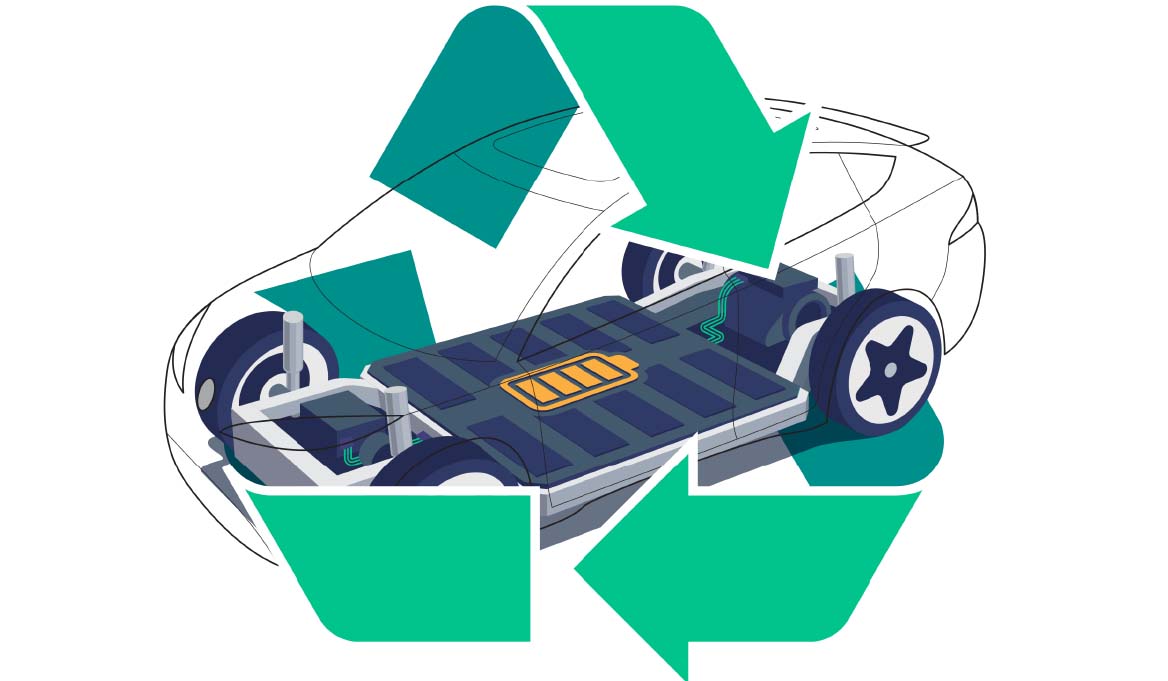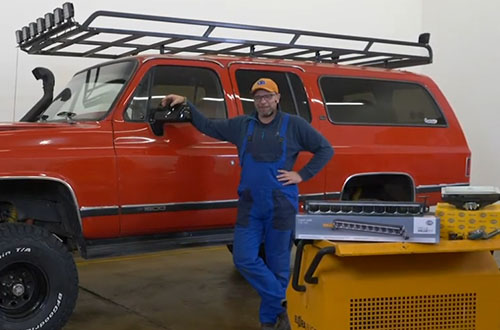
What happens to used lithium-ion batteries from electric cars?
09-01-2021Old standard batteries for domestic use contain harmful and environmentally hazardous substances, for example lead, mercury or cadmium. For that reason you can’t dispose of them in the household waste. But if you want to and have to dispose of batteries, you will find several options available in most countries. In supermarkets, for example, or at recycling centres, used batteries can usually be handed over free of charge. But it's still not quite that simple with lithium-ion batteries from electric cars. However, it is a fact that there are already huge numbers of used traction batteries or rechargeable batteries being disposed of today.
Most car manufacturers recommend replacing the traction battery in an electric car after 8 to 10 years, some manufacturers even say 15 years. Since electromobility has only grown significantly in recent years, it was probably thought that larger numbers of batteries would only need to be disposed of in a few years’ time. Yet waste management companies are already being overrun. "We'd never have thought that these quantities would have accumulated after such a short time," the managing director of a recycling company recently admitted, speaking for companies in his line of business. In the meantime, numerous companies are investing in battery recycling.
What happens to old lithium-ion batteries? In principle, there are two options: recycling the raw materials contained in the batteries or reusing the lithium-ion batteries that have been sorted out.
The ADAC calculates that a battery weighing around 400 kilograms with a capacity of 50 kWh contains around 6 kg of lithium, 10 kg of manganese, 11 kg of cobalt, 32 kg of nickel and 100 kg of graphite. A wide variety of methods are used to recycle the raw materials. All of them aim to achieve the highest possible recycling rate. "A recycling process is efficient if it recovers at least 90 per cent of the target elements, such as graphite, lithium or cobalt," recycling expert Prof. Bernd Friedrich from the RWTH Aachen University told the Automobile Club.
As a rule, recycling processes usually begin with manually dismantling the lithium-ion battery system. This is followed by other steps, such as sorting, shredding and thermal melting. According to the current state of the art, the majority of materials can be recycled today. However, some of the steps in the process still consume too much energy and are very expensive.
Numerous pilot plants have made it their mission to make the processes more efficient. The Volkswagen Group, for example, has set itself an ambitious long-term goal: the Wolfsburg company wants to recycle 97 per cent of all raw materials. A pilot plant in Salzgitter aims to get this figure to 72 per cent from 2022 onwards.
Second life: secondary use of lithium-ion batteriesReusing batteries – also known as the "second life" method – is an exciting option, also because it's not possible for any recycling process to be completely free from residual materials. Here the batteries continue to be used in stationary operation. Reusing batteries is particularly suitable because most batteries still have an energy content of 70 to 80 per cent of their original capacity when they come to be sorted out.
Since the batteries are subjected to much less load in stationary operation, they can be used like this for well over 10 years. The sorted lithium-ion batteries are then put to use, for example, in private households or in industrial applications.
But even batteries that have been allowed to live a second life will one day get to the end of the road: and they will be recycled.
There's a growing number of used lithium-ion batteries. After they have been used in electric cars, a part of the old batteries is recycled in order to recover the raw materials contained in them. Source: Shutterstock


